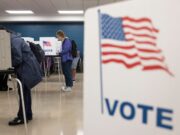As parents of students in the Madison school district, we appreciate that the Madison365 article
Here’s What You Need to Know About Vouchers and Charters (March 22) attempted to provide clarity on Wisconsin’s confusing landscape of vouchers and charters. We also agree that it’s important for the public to be fully informed.
To that end, it is critical to seek balance and objectivity when reporting on this issue.
Unfortunately, and perhaps in consequence of interviewing only one researcher, the article contains significant inaccuracies which must be addressed in order to provide a fair and correct understanding of how vouchers and charters operate.
Perhaps the most disturbing inaccuracy is Dr. John Witte’s allegation that public schools are over-identifying students as having disabilities and have a financial incentive for doing so. The fact of the matter is that Wisconsin public schools only receive state reimbursement averaging 25% of the extra cost of educating a student with a disability. Federal funds provide another 15%, and the rest must be made up locally.
To pay for those remaining unfunded special education costs, Wisconsin public schools statewide spend over a billion dollars annually in resources that otherwise would have served all students. For MMSD, the state reimbursement rate is below the average, which has resulted in the district transferring over $52 million from the general fund to special education this year.
On the other hand, private voucher schools in Wisconsin receive at least $4,000 more per student for a special needs voucher than for a “regular” voucher, no matter the actual cost. If the school spends more than the special needs voucher amount (currently $12,431), they can get 100% state reimbursement up to $18,646 and 90% reimbursement for anything beyond. Meanwhile, many special needs voucher students continue to receive disability-related services provided by public schools through the “equitable services” requirement of the Individuals with Disabilities Education Act.
In other words, the financial incentives are quite opposite to Dr. Witte’s claim.
A second inaccuracy occurs in the false equivalence between the various types of schools, regarding requirements for accommodating students with disabilities. Public schools are, in fact, required to provide for the education of every student with a disability who enrolls. It is of course possible that any given public school might not have the capacity to properly educate a student with exceptional needs. In those situations, however, the district is still very much responsible, both financially and legally, for the education of that student, even when the education takes place in a different school.
By contrast, most of the special needs voucher schools listed at the WI Department of Public Instruction specify what level of disability they are prepared to accommodate (
https://dpi.wi.gov/sites/default/files/imce/sms/SNSP/SNSP_School_List_-_Revised_October_2018.pdf). A number of them even specify that they are not wheelchair accessible, contrary to the implications in the article. This comes about because the Americans with Disabilities Act contains an exemption for religious schools. Meanwhile, charter schools are technically required to serve students with disabilities, but in practice it is not uncommon for students to be “counseled out,” particularly from non-instrumentality charters, if the school deems them too challenging to educate.
Dr. Witte accurately states that 20% of students in Milwaukee public schools have Individualized Education Plans. However, he then accuses MPS of over-identifying as many as 4 in 10 of those students, an egregious claim. In so doing, Dr. Witte fails to account for the legitimate reasons why MPS students are receiving special education services in such high numbers. It is well-known that socio-economic challenges and childhood adversity are associated with high rates of disability, and 82.9% of MPS students are economically disadvantaged. Still more relevant, however, is the extent to which voucher school admissions practices are driving up the proportions of students with disabilities in MPS. The Milwaukee voucher program is close to 40% the size of MPS, with nearly 29,000 students, plus an additional 315 students using special needs vouchers at Milwaukee private schools. However, students identified as having disabilities make up only 2% of voucher recipients. MPS must accommodate any student of any ability who wishes to enroll, which results in a substantially higher concentration of students with IEPs.
Yet another inaccuracy in Dr. Witte’s interview is the claim that vouchers save the public schools money. In fact, of the students who received a first-time voucher in Wisconsin’s statewide program in 2018-19, over half of them (1,387) were attending private school in the prior year. Paying for these 1,387 students who were not in public school the previous year is a new expense and not a savings in any sense.
Accurate information is critical to any effort to improve education for students with disabilities, and to meet the needs of all students more broadly. In future explorations of the varieties of taxpayer-funded education in Wisconsin, we recommend seeking the expertise of Dr. Julie Mead of UW-Madison’s Department of Education and Policy Analysis. Dr. Mead’s research centers on legal issues related to special education and legal issues raised by various forms of “school choice.”


































